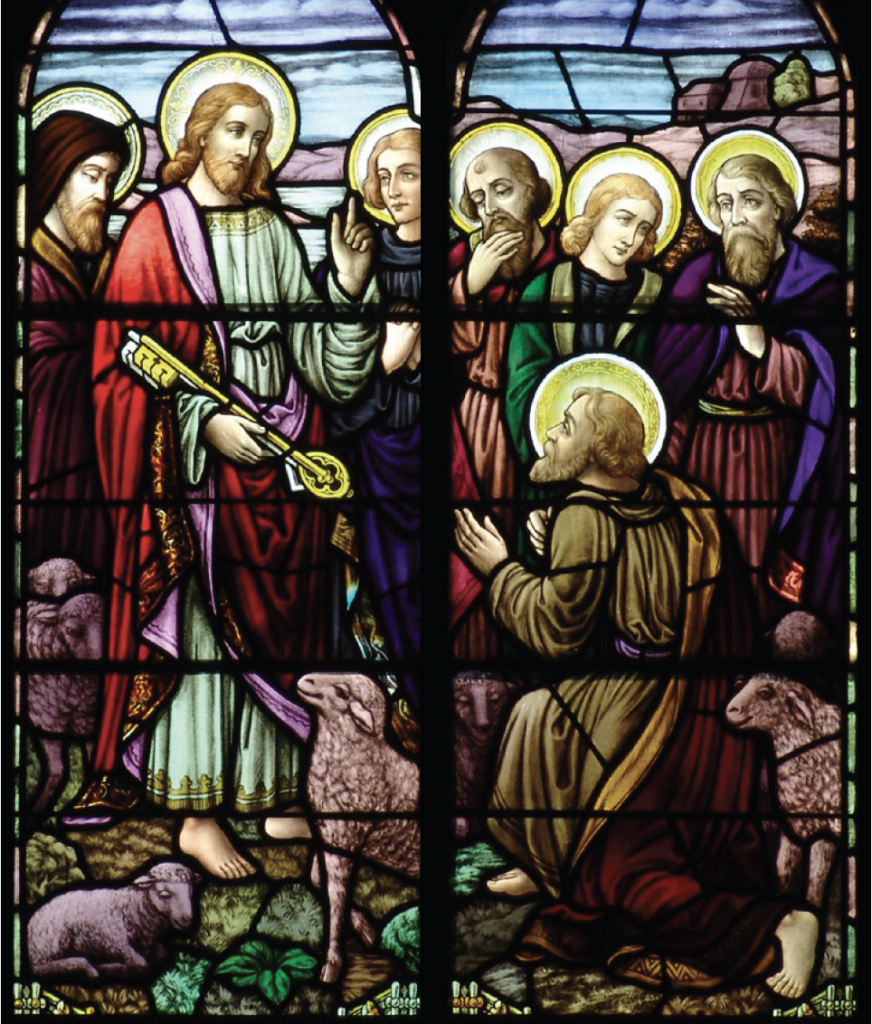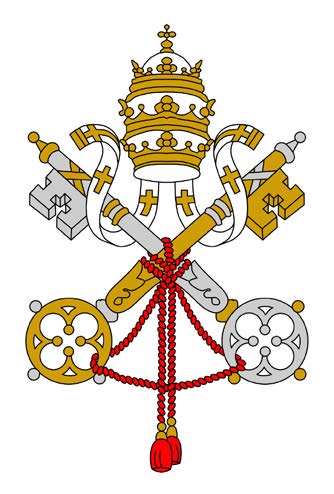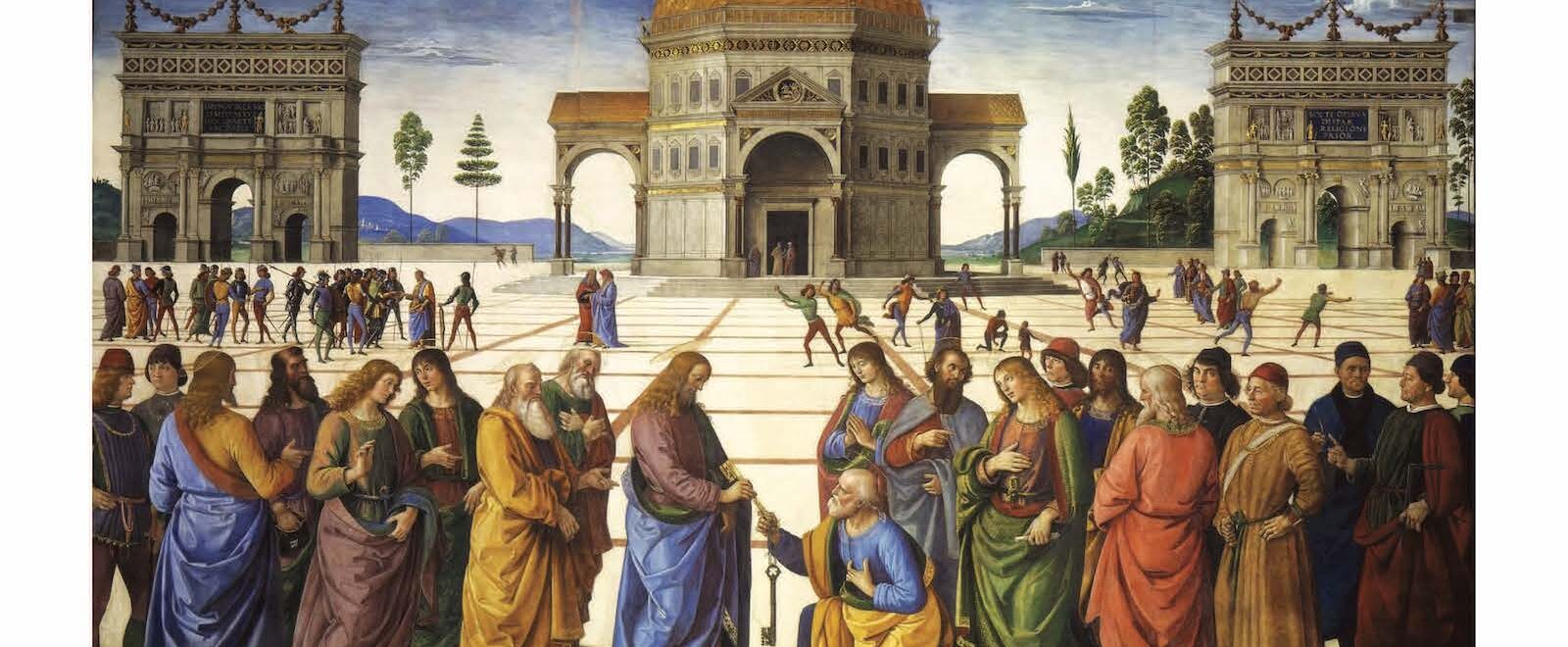
Dear Parishioners and Friends,
How many keys do you have on your key ring? I have a total of six: one for the exterior doors of the Church and Center; one for the interior doors of the Center and another for the Church; and three for padlocks. And I wouldn’t get very far if I lost or misplaced them.
Keys, whether they are the traditional metal variety, or modern magnetic cards or fobs, are an indispensable part of our everyday lives. But I’ve wondered if keys actually existed in Biblical times. Yes, they did, but they were very simple and very large, much larger than our keys today. This might explain why the keys Jesus gives to Peter in one of our windows are so large.

One source says: “The custom of carrying large keys on the shoulder seems to be an ancient one. Treasurers and other city officials carried these huge keys as a symbol of high office. They often had a bunch of keys on the shoulder, half hung down the front and half hung down the back. The chief steward of a rich home carried the keys of the household on his shoulders. The handle of a key was made either of brass, silver, or wood and was often very elaborately carved. They were usually large keys. Ordinary wooden keys were from six inches to two feet in length. It was much easier to carry a number of keys this size on the shoulder.”
This explains what we hear in today’s reading from the prophet Isaiah (22:22): “I will place the key of the House of David on his shoulder; what he opens, no one will shut, what he shuts, no one will open.”

In the Gospel, Jesus tells Peter that he will be given the “keys to the kingdom of heaven.” This passage foresees the papal authority that Peter and his successors would eventually exercise over the church. On the papal coat of arms, in addition to the Papal Tiara, formed by three crowns symbolizing the traditional triple power of the Pope (father of kings, governor of the world and Vicar of Christ), Peter’s keys are very prominent as well.
Of course, the question of papal authority has caused some serious issues in the history of the church, which have resulted in schism and reformation. Even today, there are those in the church who question Pope Francis’ authority in ways that many find distasteful at best, and potentially schismatic at worst.
As I think about the symbol of “keys” I realize that they work both ways: to lock people in (or out), and to unlock a door to freedom (or welcome). In recent times we’ve witnessed both purposes.
But more than just a symbol of papal authority, all of us hold a “key to the kingdom.” We call it baptism, the sacrament that initiates us into the church and into the kingdom of God. The General Instruction on Christian Initiation (para. 3) says, “Baptism, the door to life and to the Kingdom, is the first Sacrament of the New Law…” In Baptism, all of us have received a key that unlocks for us the grace of God and a dignity which can never be taken away.
Many years ago there was a pastor of a parish in South Buffalo near where I grew up, Msgr. Leo Toomey. He was a legendary figure who showed up everywhere – wakes, funerals, graduations; you name it. When you met Msgr. Toomey for the first time, he would reach into his pocket and press into your hand a small gold “key to the kingdom” to remind you of how important you were to God. In other words, keys aren’t just for dignitaries like those who are honored with a “key to the city.” I see the keys to the kingdom as a symbol of the mercy and generosity of a God who created us and loves us all equally.
Perhaps, at this critical juncture in the life of the Church, in which too many are quick to condemn or exclude, we ought to be less concerned with binding and more with loosing.
Blessings on your week ahead!
Fr. Tim Shreenan, O.F.M.Pastor

